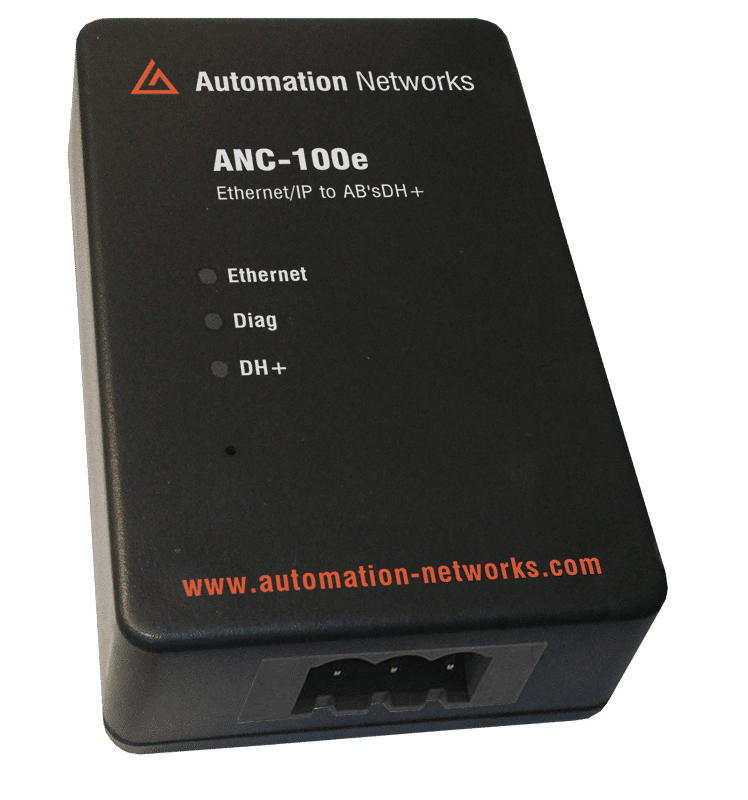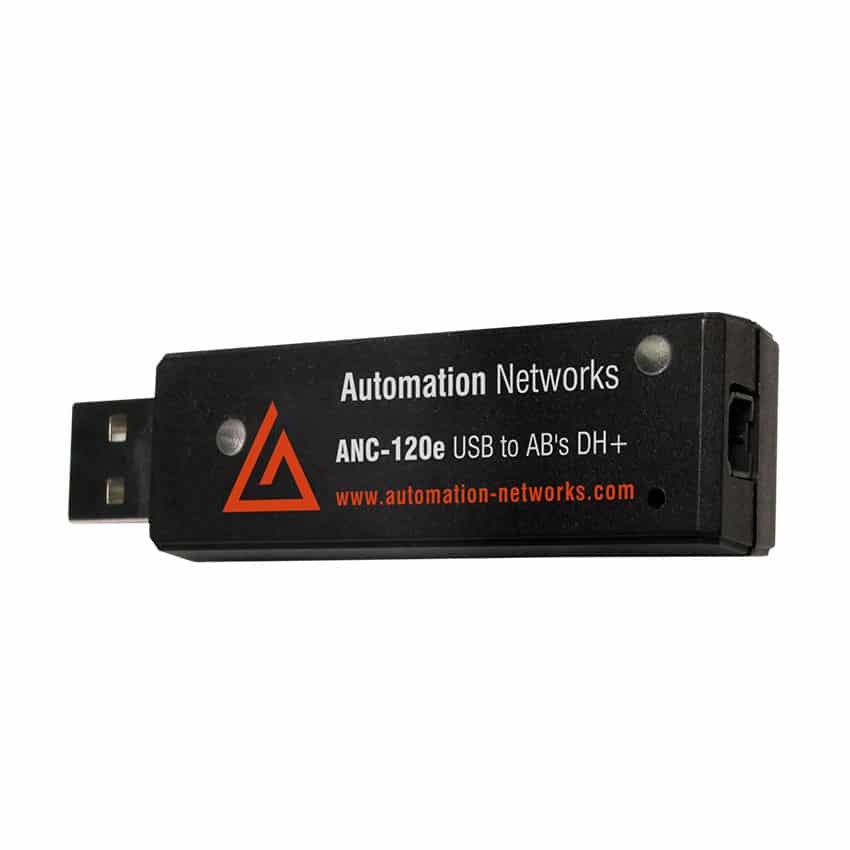Ethernet/IP to DH+
Allen-Bradley DH+ (Data Highway Plus): A Comprehensive Overview
Allen-Bradley DH+ (Data Highway Plus) is a legacy communication network protocol developed by Rockwell Automation (formerly Allen-Bradley) for industrial automation and control systems. In this 1000-word exploration, we will delve into what DH+ is, its history, architecture, applications, and its place in the context of modern industrial networking.
Understanding Allen-Bradley DH+
A factory may want to bridge Ethernet to legacy DH+ (Data Highway Plus) for several compelling reasons:
Preserving Investments: Many factories have existing industrial automation systems built around legacy DH+ networks, including PLC-5s and other equipment. These systems represent significant investments, and transitioning to entirely new technologies can be costly and disruptive.
Integration with Modern Systems: Bridging Ethernet to DH+ allows factories to seamlessly integrate legacy equipment with modern Ethernet-based systems. This integration enables real-time data exchange, remote monitoring, and centralized control, facilitating smoother operations and improved decision-making.
Data Access and Analysis: Ethernet networks provide faster data access and higher bandwidth, enabling factories to collect and analyze data from legacy DH+ devices more efficiently. This data can be used for predictive maintenance, quality control, and process optimization.
Remote Management: Ethernet bridging enables remote access and management of legacy equipment. Factory personnel can diagnose issues, perform maintenance, and make adjustments from anywhere, reducing downtime and operational costs.
Scalability: Ethernet networks are highly scalable and adaptable to evolving automation needs. Bridging to Ethernet allows factories to expand their systems, add new equipment, and accommodate changes in production requirements.
Interoperability: Ethernet is a widely adopted and standardized protocol, ensuring compatibility with a wide range of modern industrial equipment and technologies. This compatibility simplifies the integration of legacy systems into broader automation ecosystems.
In summary, bridging Ethernet to legacy DH+ networks enables factories to leverage the benefits of modern networking while preserving their investments in legacy automation systems. This approach enhances operational efficiency, data accessibility, and connectivity, positioning the factory for improved productivity and competitiveness in the industrial landscape.
History and Background:
Allen-Bradley, a prominent player in the field of industrial automation, introduced DH+ in the 1980s as a proprietary communication protocol. It was designed to facilitate data exchange and communication among Allen-Bradley’s programmable logic controllers (PLCs), input/output (I/O) devices, and other industrial automation equipment.
DH+ was initially developed as an improvement over its predecessor, Data Highway, which used a half-duplex, multi-drop communication scheme. DH+ introduced full-duplex communication, improved data transfer rates, and enhanced network reliability, making it suitable for a broader range of industrial applications.
Network Architecture:
DH+ is based on a serial communication architecture. It employs a multi-drop topology, where multiple devices are connected in a daisy-chain configuration using a single communication cable. The network typically operates at a baud rate of 57.6 kbps, although other baud rates (such as 115.2 kbps) are also supported.
DH+ uses a master-slave communication model, where a master device (typically a PLC) initiates communication with slave devices (e.g., I/O modules). The master device polls each slave device sequentially to request data or send commands. This polling mechanism allows for deterministic communication in industrial control systems.
Physical Media and Connectivity:
DH+ networks traditionally use a coaxial cable with BNC connectors for physical connectivity. The coaxial cable, known as a “trunk cable,” is terminated at each end with resistors to ensure signal integrity. Devices are connected to the trunk cable through drop cables with BNC connectors.
In addition to coaxial cables, DH+ networks can also be extended using fiber optic cables or Ethernet-to-DH+ converters for integration with modern Ethernet-based networks.
Applications of Allen-Bradley DH+
Allen-Bradley DH+ has been widely used in various industrial applications due to its reliability and compatibility with Allen-Bradley PLCs and devices. Some common applications include:
Manufacturing Automation: DH+ networks have been extensively used in manufacturing plants to connect PLCs, I/O modules, and human-machine interfaces (HMIs). This allows for real-time control and monitoring of production processes.
Process Control: Industries such as chemical, petrochemical, and pharmaceuticals rely on DH+ networks to control and monitor complex processes. PLCs on DH+ networks play a critical role in maintaining precision and safety.
Material Handling: In warehouses and distribution centers, DH+ networks are used to control conveyor systems, sorters, and other material handling equipment. This ensures efficient movement of goods.
Utilities and Energy Management: DH+ networks are employed in utilities, such as water treatment plants and power generation facilities, to control pumps, valves, and other critical equipment. Real-time data exchange is essential for maintaining operational efficiency.
Building Automation: DH+ networks are used for building automation systems, controlling HVAC (Heating, Ventilation, and Air Conditioning), lighting, and security systems in commercial and industrial buildings.
Automotive Manufacturing: The automotive industry relies on DH+ networks to control assembly lines and robotic systems. PLCs communicate over DH+ to ensure precision in manufacturing processes.
Pharmaceutical and Biotechnology: In regulated industries like pharmaceuticals and biotechnology, DH+ networks are utilized to maintain compliance with stringent quality and safety standards. Precise control and data logging are essential.
Challenges and Considerations
While DH+ has served its purpose well for decades, it does come with some challenges and considerations, particularly in today’s industrial landscape:
Legacy Technology: DH+ is a legacy technology, and many modern industrial automation systems have transitioned to Ethernet-based networks due to their higher data rates and broader capabilities.
Limited Data Rate: The maximum baud rate of DH+ is relatively low (57.6 kbps), which can be a limitation in applications requiring high-speed data transfer.
Integration Challenges: Integrating DH+ networks with newer Ethernet-based systems can be complex and may require specialized hardware and expertise.
Limited Scalability: DH+ networks can be less flexible and scalable compared to modern networks, making it challenging to adapt to changing automation needs.
Maintenance and Support: As DH+ equipment ages, finding replacement parts and support can become increasingly difficult and costly.
Transitioning from DH+ to Modern Networks
Recognizing the limitations of DH+ and the benefits of Ethernet-based networks, many industries are transitioning away from DH+ in favor of more modern and versatile communication protocols. This transition involves replacing or upgrading DH+ equipment and adopting Ethernet/IP, Profinet, or other standard industrial Ethernet protocols.
To transition from DH+ to modern networks:
Assessment: Begin by assessing your current DH+ network, identifying critical components, and understanding the communication requirements of your automation systems.
Hardware Upgrade: Replace or upgrade legacy DH+ equipment with Ethernet-enabled devices. This may include updating PLCs, HMIs, and I/O modules.
Network Redesign: Plan and design a new network architecture based on Ethernet or another modern protocol. Ensure that the network design meets the data rate and scalability requirements of your application.
Protocol Transition: Implement the chosen Ethernet-based protocol (e.g., Ethernet/IP) in your automation systems. This may involve reprogramming PLCs and reconfiguring network settings.
Testing and Validation: Thoroughly test the new network to ensure data integrity, real-time control, and reliability. Validate that the transition does not disrupt production processes.
Training: Train your engineering and maintenance teams on the new network and protocol to ensure they can effectively operate and troubleshoot the system.
Documentation: Maintain detailed documentation of the transition process, including network configurations, device settings, and backup procedures.
Conclusion
Allen-Bradley DH+ (Data Highway Plus) has played a significant role in industrial automation and control systems for several decades. While it has been reliable and widely used, the evolution of technology has led to the adoption of more modern and versatile communication protocols, such as Ethernet/IP.
As industries continue to transition toward Ethernet-based networks, understanding the legacy of DH+ and its applications is essential. Whether maintaining existing DH+ systems or embarking on the journey of transitioning to modern networks, careful planning, assessment, and implementation are key to ensuring the continued success of industrial automation and control.
The ANC-100e DH+ converter provide communications between newer Ethernet Technologies and DH+ legacy PLC-5s and SLC/504s

The ANC-100e is a pocket-sized, high performance, Industrial Rated Ethernet DH+ Converter. Features include: Ease of Configuration via Web Interface and DH+ Auto Polarity Detection and DH+ Auto Baud Rate Detection.
$1,295 USD List.
20 min. theautomationblog video review
https://theautomationblog.com/data-highway-plus-to-ethernet/
The ANC-120e is a competitive alternative to AB’s 1784-U2DHP PLC Programming Cable

Is an economical and high performance USB-to-Allen-Bradley Data Highway Plus converter interfacing major HMI, SCADA, PLC Programming packages to Devices on DH+. Its features significantly outperform AB’s 1784-U2DHP PLC Programming Cable operating at 12 Mg USB speed with the Controllogix Ethernet/IP Driver.
The ANC-120e works with all SCADA, MMI, PLC programming packages installed on your PC with USB direct access to the DH+ network and stations. These packages include RSLINX/LOGIX Classic & Enterprise with RSLOGIX 5/500, Wonderware DAServer & TCP/IO Server, Citect, and Kepware using Controllogix Ethernet/IP Drivers.
$1,295 USD List.
theautomationblog video review
ANC-100e Ethernet IP to AB's DH+ Converter
The Automation Networks ANC-100e communicates with all SCADA, HMI, PLC programming with direct Ethernet/IP access to the DH+ network and stations.
ANC-100e has similar replacement features as the Controllogix 1756-DHRIO / 1756-ENBT, and AB 1784 Interface Cards: 1784-U2DHP, 1784-KTx, 1784-PKTx, 1784-PCMK and Prosoft AN-X2-DHRIO Converters.
$1,295 USD List. Apr 1, 2024
ANC-120e USB to AB's DH+
The ANC-120e works with all SCADA, MMI, PLC programming packages installed on your PC with USB direct access to the DH+ network and stations. These packages include RSLINX/LOGIX Classic & Enterprise with RSLOGIX 5/500, Wonderware DAServer & TCP/IO Server, Citect, and Kepware using Controllogix Ethernet/IP Drivers.


